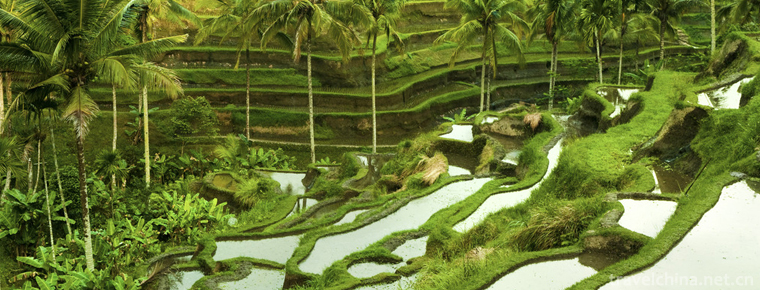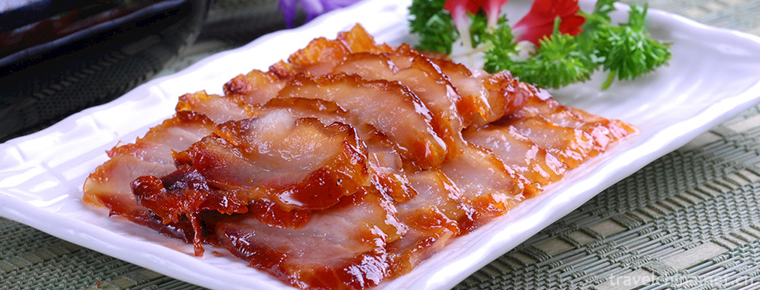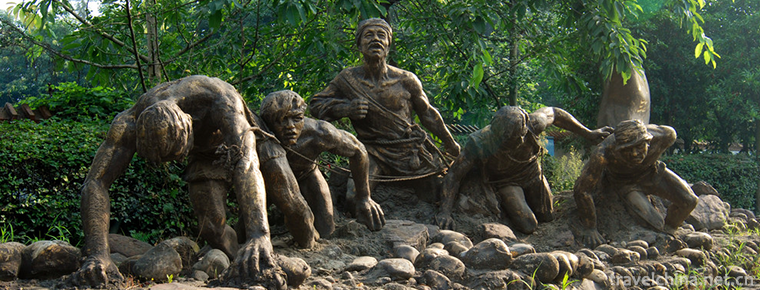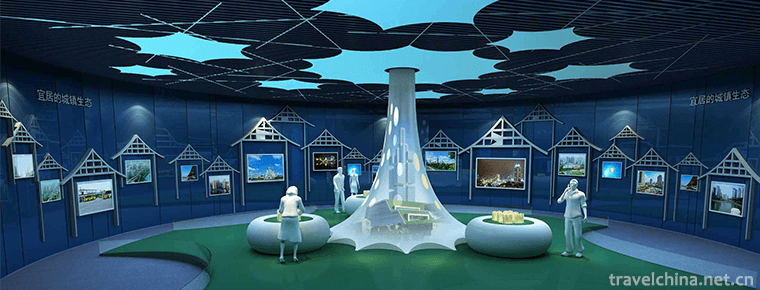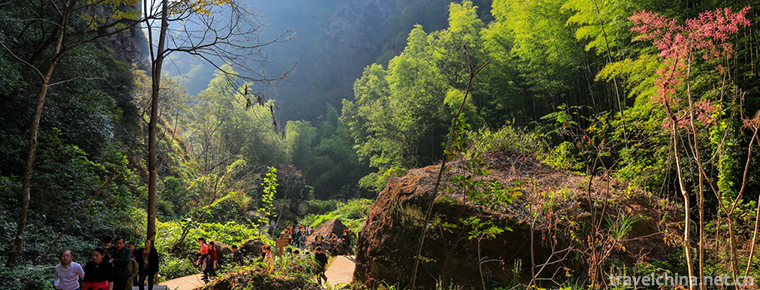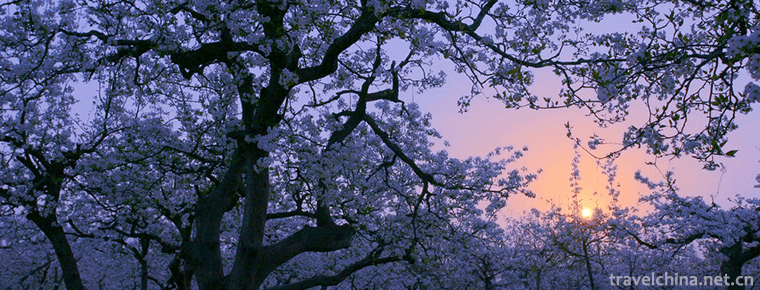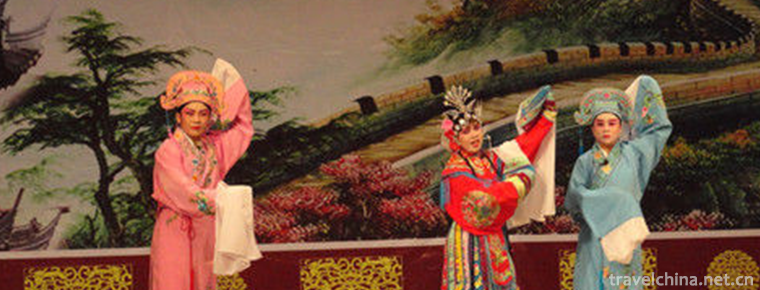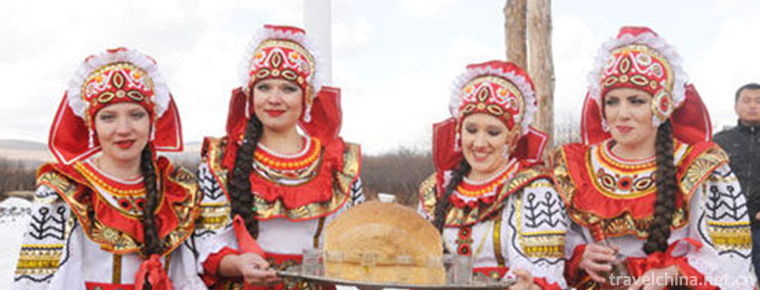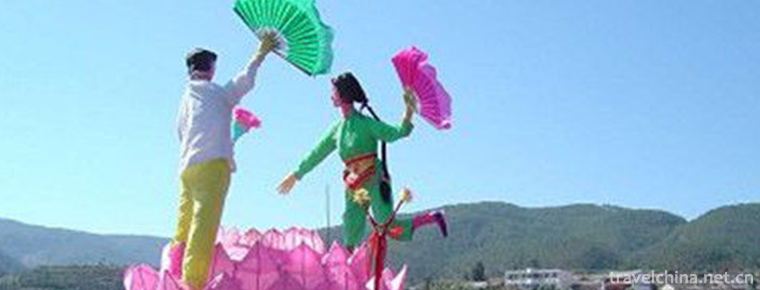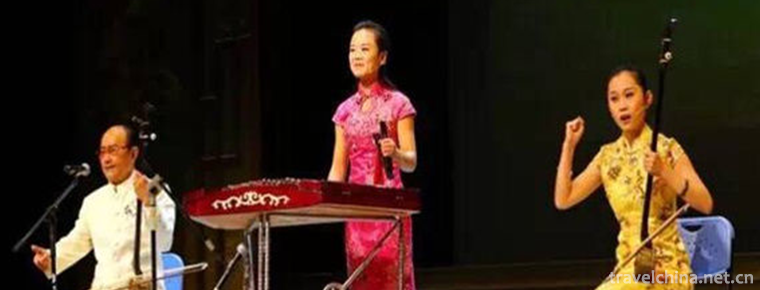Printing and Dyeing Techniques of Nantong Blue Printing Cloth
Printing and Dyeing Techniques of Nantong Blue Printing Cloth
Nantong Blue Printing and Dyeing Technology, one of the local traditional printing and dyeing techniques in Nantong City, Jiangsu Province, is one of the national intangible cultural heritage.
Nantong blue printed cloth printing and dyeing technology to hand-spinning, hand-weaving, hand-dyeing methods to produce quilt, baggage, headscarf and other daily necessities, through the selection of grey cloth, degreasing, laminating paper and other processes to produce flower cloth.
On May 20, 2006, the printing and dyeing techniques of Nantong Blue Printed Cloth were approved by the State Council and listed in the first batch of national intangible cultural heritage list, numbered_-24. On May 24, 2018, Nantong Blue Printing and Dyeing Technology was selected as the first batch of national traditional process revitalization catalogue.
historical origin
Folk dyeing with blue grass pigments can be traced back to the Spring and Autumn Period and the Warring States Period. Xunzi, a thinker in the late Warring States Period, witnessed the process of the transformation of green "blue grass" pigments and the process of dyeing from yellow to green, from green to blue, and then to green. The lament of "green, take it from blue, and green is more than blue" has become the famous saying of describing future generations that "blue is better than blue out of blue".
Blue indigo has developed into blue dyeing technology, which has been more than a thousand years up to 2018. Jia Sixie's "Qimin Yaoshu Seeding Blue" in the Northern Wei Dynasty specifically describes the method of prying the blue lake from the blue grass: "In July, the pit is made to receive hundreds of bunches, to make mud of wheat straw, to make five inches deep, to cover the four walls. Cut the blue and stand in the pit. Put it into the water and suppress it with wood and stone. Hot overnight, cold overnight, wash away, juice in the urn, the rate of ten stone urn, a bucket of lime five liters, a quick fall, a hectare of food. Clarify and drain water. Don't make small pits. Store them in blue lakes. Waiting like porridge, but also out of the urn, blue lake into it." This is the world's first record of blue lake process operation.
Since ancient times, Nantong has a simple folk custom, riverside and sea, warm and humid, especially suitable for cotton growth. Cotton planting is very common in the local rural areas. In addition, the local folk textile technology is very developed. Especially when Huang Daopo learned the Li's textile technology, he returned to his hometown, Songjiang, Jiangsu, to introduce Li's textile tools and improve them, which promoted the cotton textile industry in Songjiang and Nantong areas. Development.
After the Song and Yuan Dynasties, there were wooden spinning wheels and looms in every household, the sound of cloth machines could be heard in every household, and all households had weavers. Nantong became a textile town. Cotton cloth has been quite popular among the people.
With the development of cotton spinning and handicraft industry, a large number of blue grass planting, dyeing shops have increased. Nantong is warm and humid, especially suitable for the growth of Bluegrass. Blue printing cloth dyes are mainly made of blue grass, which can be divided into four kinds according to its family and genus characteristics and growth environment, i.e. Polygonum, Shanlan, Mulan and Isatis indigotica. Jiangsu is famous for its abundant Polygonum blue. In the Ming and Qing Dynasties, Nantong dyeing and weaving blue printing cloth workshop has developed into a large-scale market, according to the Ming Dynasty "Nantong County Chronicle", there are 19 manual dyeing workshops registered in the "Dyeing and Weaving Bureau".
People's demand for daily necessities is constantly increasing. The original simple and rough graphics can no longer meet the people's aesthetic and living needs. Folk artists boldly absorb traditional art patterns such as paper-cut, embroidery, wood carving, and constantly enrich the pattern of dyeing and weaving blue prints. At the same time, with the development of oil umbrella industry, the use of tung oil paper for engraving plate saves labor and time, and has good water resistance, scratch resistance, long service life, richer pattern performance, which makes the process more mature. The wide application of folk blue printing cloth promotes the rapid development of the "printing burden" team. The "printing burden" is also called "flower bearer". They only print, bracket, and do not dye, providing various forms of printing plate for farmers. This kind of "printing burden" is also called "bald printing" in the south of the Yangtze River. They walk through streets and villages, carrying soybeans and lime powder at one end, and scratching tools and printing plates at the other end. Customers are allowed to choose patterns for processing. They constantly change patterns in order to make a prosperous business.
At the end of the Qing Dynasty, there were still nearly 100 people in the "printing troop" in Nantong area. Farmers send scraped grey cloth to nearby dyeing houses or make their own indigo dyeing. Because of the growing demand for blue printed cloth, the popularization of blue grass cultivation also promotes the development of indigo industry.
The dyeing and weaving industry in Jianghai region has developed rapidly with the dyeing and weaving raw materials taken locally and the convenient technology of self-spinning and self-weaving, and has gradually become a well-known specialty in the country. The process of blue printing cloth was spread from Jiangnan to Jiangbei, and from Suzhou and Nantong to all parts of Jiangsu Province. The main producing area centered on Jiangsu Province was formed. The products not only supplied locally, but also sold well everywhere. Printing skills spread and influenced the whole country.
Technological characteristics
Nantong folk blue printing cloth is made by hand-spinning, hand-weaving and hand-dyeing. Its patterns are all carved by hand, each carved paper plate is like paper-cut art, with a simple, rough, lively style, its artistic image is often highly generalized and exaggerated, with strong local characteristics.
The most typical pattern of blue prints is the pattern of white and blue flowers on blue background. Blue and white flowers, only a pattern, the pattern is not connected. Blue flowers on the white background are usually overprinted with two plates. The first plate is called the "front page". After a little drying, the second plate is called the "cover plate". That is to say, the connection part of the first plate is covered up to make the pattern connect naturally. It is difficult to carve blue flowers with white background. They are usually made by folk artists. The traditional process of intersecting blue and white bottoms has a complicated manufacturing process. Blue printed cloth, deep blue and pure white, on the ordinary cotton cloth composed of colorful, implied ancient elephant style. Simple and elegant, implicit and beautiful, full of rich folk customs.
Nantong Blue Printed Cloth generally adopts the combination form of frame structure and central pattern. Most of the patterns are implied and contain deep content. The image of flowers, birds, fish and insects is the carrier of a certain meaning, and many of them use homonym and metaphor. These patterns reflect the influence of the times on people's aesthetic tastes. Some of the implications are very peculiar. For example, bats represent happiness. This correspondence is unique in Chinese culture. Five bats celebrate longevity around the word "five blessings".
Because the whole process of blue printing cloth is completed by manual operation, it is very different from machine printing cloth. No finished product is exactly the same. Especially in the dyeing process, the cracking of grey material will leave uneven vertical and horizontal, silk and silk blue cracks on the finished product, which is called ice cracking in the printing and dyeing industry. Grain. This is a kind of natural texture which can not be made by manpower. It makes the blue print cloth very individualized and lively.
Inheritance and protection
Inheritance value
Blue printed cloth, deep blue and pure white, on the ordinary cotton cloth composed of colorful, symbolic and auspicious style. Simple and elegant, implicit and beautiful, full of rich folk customs. Blue printing and dyeing technology has a long history, wide popularity, far-reaching impact, and has a high cultural value.
Inheriting characters
Wu Yuanxin, male, was born in December 1960. In June 2007, Wu Yuanxin was selected as the representative successor of the first batch of national intangible cultural heritage projects, which was declared by Nantong City, Jiangsu Province. Project Name: Nantong Blue Printing and Dyeing Technology.
Wang Zhenxing, male, was born in May 1939. In December 2012, Wang Zhenxing was selected as the representative successor of the fourth batch of national intangible cultural heritage projects, which was declared by Nantong City, Jiangsu Province. Project Name: Nantong Blue Printing and Dyeing Technology.
protective measures
On January 16, 2013, the first batch of "national intangible cultural heritage protection research base" was named and licensed in Beijing. Following the naming of "National Demonstration Base for Productive Protection of Intangible Cultural Heritage" in 2011, another national non-heritage protection base was born, which also means that non-heritage protection has realized two rounds of practical innovation and theoretical research. Nantong Blue Printed Cloth Art Museum (Wu Yuanxin) was selected as the first batch of "national intangible cultural heritage protection research base".
social influence
international repercussions
On July 3, 2018, members of China Academy of Fine Arts'Chinese and British fashion creative design and Creation Camp "9+1 clothes symphony" came to Nantong Blue Printed Cloth Museum. Students from 8 universities such as Southampton Solent University, Edinburgh University and students from Shanghai Design Institute of China Academy of Fine Arts shared the experience of blue printed cloth printing and dyeing skills and felt the charm of China.
Important activities
On the morning of June 2, 2017, a symposium on "Non-Heritage Protection - Vivid Practice of Inheritance and Development" was held in Beijing, jointly organized by the Ministry of Political Culture of People's Daily and the Department of Non-material Cultural Heritage of the Ministry of Culture. Wu Yuanxin, the national representative successor of Nantong blue printing and dyeing technology, described the inheritance of Nantong blue printing and dyeing technology.
Cultural anecdotes
- Marriage expectations
In Nantong, after both men and women choose the auspicious day, the greetings that men bring to women, such as cakes, sugar and zong, are wrapped in blue prints. When dragging dowry, they twist the blue and blue cloth into ropes and tie up the cabinet loaded into the car. This can not only protect the dowry, but also reflect the strength of the man's family, the elegance and dignity, and the homophonic tone of "Qing" with "kin". It symbolizes the spouse's love and happiness after marriage. On the wedding day, there will be a new blue printed cloth "He He He" quilt on the wedding bed. Folk legend has it that on the first night of the bridal chamber, the couple sleeps on the blue printed cloth and the cushion, leaving blue and blue patterns on their bodies. This is a symbol of a lifetime of love and affection. Therefore, the blue printed quilt used for the new marriage must not be cleaned. The pattern of the cushion quilt is generally two immortals of He He He He He, and the pattern of the face pattern is the same.“ Kirin send children"and other love themes, expecting to give birth to your son as early as possible, and live in harmony.
Sacrifice to "Mei and Ge Erxian"
In the past, the dyeing houses in Nantong had the tradition of offering sacrifices to the two immortals of plum and Ge, which were regarded as the ancestors. Because the key technology of dyeing workshop is to mix dyes, the quality of dye proportion is directly related to the stability of color fastness. Indigo used by the folk is considered to be the most difficult to grasp in the dyeing workshop. Its proportion should be adjusted in time according to temperature and humidity. If the timing of dyeing is not good, fabric fading will be very serious. The poor color fastness is the result of multiple factors, among which there are some uncertainties. Traditional craftsmen believe that the grandfather can eliminate unfavorable factors and protect the dyeing workshop tank water mixing and prosperity of business. Therefore, in the dyeing workshop, the grandfather of the dyeing workshop "Mei, Ge Erxian" must be worshipped, when opening the vat, in order to achieve the tank water mixing. On the ninth day of September every year, the dyeing houses have to serve wine and vegetables, kill chickens and sheep to worship "Mei and Ge Erxian". The scene is very lively.
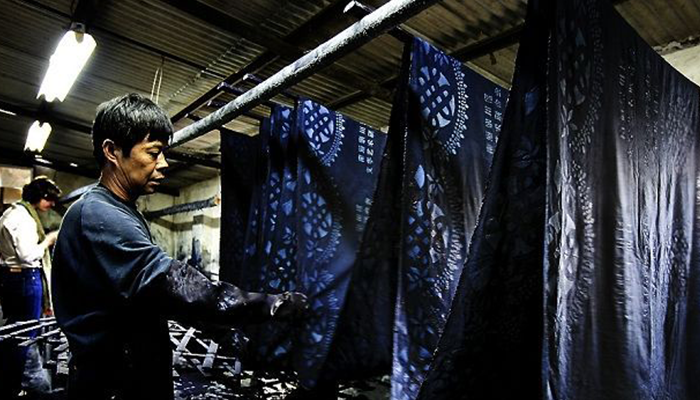
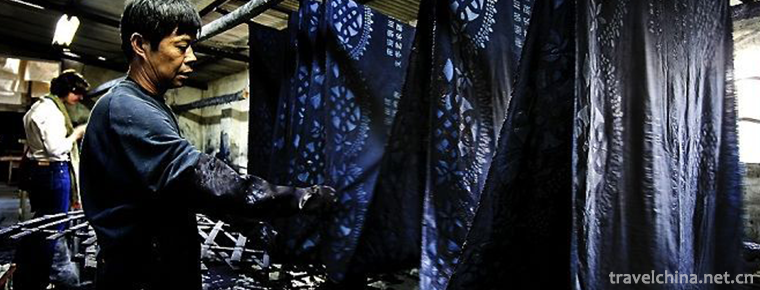
Printing and Dyeing Techniques of Nantong Blue Printing Cloth
-
The longji yao and zhuang ethnic terrace
Views: 292 Time 2018-10-12 -
barbecued pork
Views: 305 Time 2018-11-02 -
Shennong Creek Scenic Area
Shennongxi, originating from the main peak of Shennongjia, flows through Badong County, Hubei Province. It travels from north to south through deep mountain canyons, and converges into the Yangtze Riv
Views: 175 Time 2018-12-12 -
Beijing Planning Exhibition Hall
Beijing Planning Exhibition Hall, located in Qianmen East Street (east side of old Beijing Railway Station) of Dongcheng District of Beijing, is renovated on the basis of the original building.
Views: 391 Time 2018-12-26 -
Taierzhuang Ancient City Scenic Area
Taierzhuang Ancient City, located at the center of the Beijing-Hangzhou Grand Canal, is located at the junction of Taierzhuang District, Zaozhuang City, Shandong Province
Views: 171 Time 2019-02-13 -
Taining World Geological Park Fujian Province
Fujian Taining World Geological Park, located in Taining County, Sanming City, northwest Fujian Province, covers an area of 492.5 square kilometers, of which Danxia landform
Views: 177 Time 2019-02-13 -
Xia Jin Old Yellow River Forest Park
The forest park scenic spot of the old Yellow River in Xiajin is the ruins of the old Yellow River. It is a national AAAA-level scenic spot. It is located in Xiajin County, Shandong Province
Views: 407 Time 2019-02-25 -
Taoist Drama
Taoist sentiment is a category of traditional Chinese folk art. It originated from Taoist songs such as Chengtian and Jiuzhen in Tang Dynasty. The Southern Song Dynasty began to accompany with fishing
Views: 286 Time 2019-04-25 -
Russian Basque Festival
"Russian Basque Festival" is an important traditional festival of the Russian people in Erguna, Inner Mongolia, no less than the Han Spring Festival. Every year during the period from late A
Views: 283 Time 2019-04-28 -
Midu folk songs
"Midu Folk Song" is the general name of the Han and minority folk songs in Midu County, Yunnan Province. Midu folk song is a multi-cultural complex system, which is the convergence and cohes
Views: 142 Time 2019-06-04 -
Xuzhou Qinshu
Xuzhou Qinshu is a kind of opera recognized by Xuzhou local people in Jiangsu Province. Spread in Xuzhou. At first, it was a recreational activity of "playful friends" in the leisure time of
Views: 336 Time 2019-07-09 -
Nanchongs tertiary industry
In 2019, investment in real estate development in Nanchong will increase by 23.6% compared with that in 2018. The construction area of commercial housing was 31.8726 million square meters, an increase of 23.5% over that in 2018, of which the newly started
Views: 395 Time 2020-12-17
